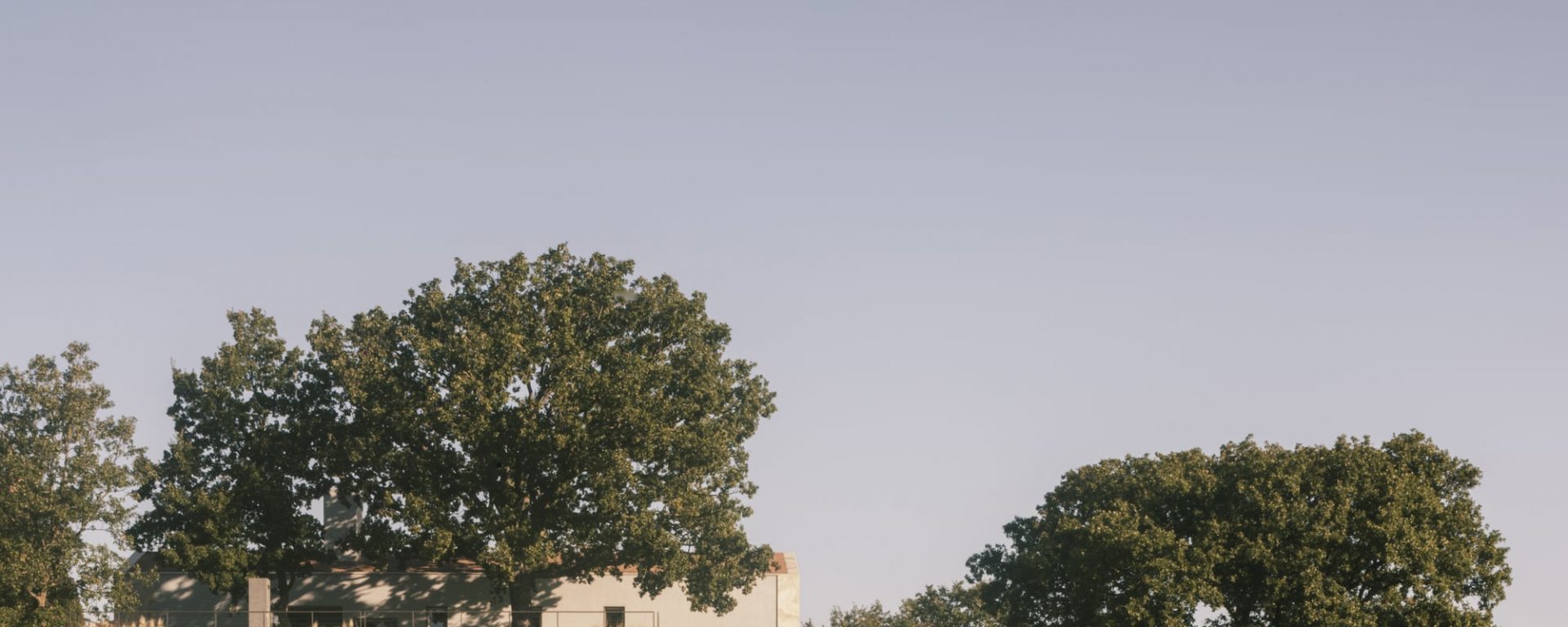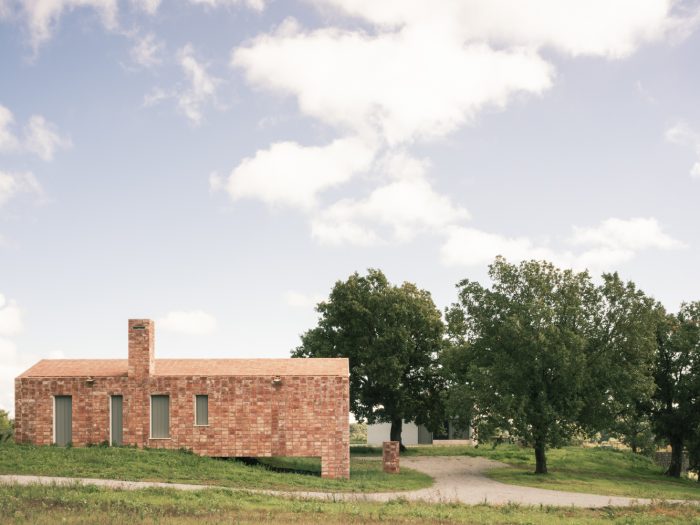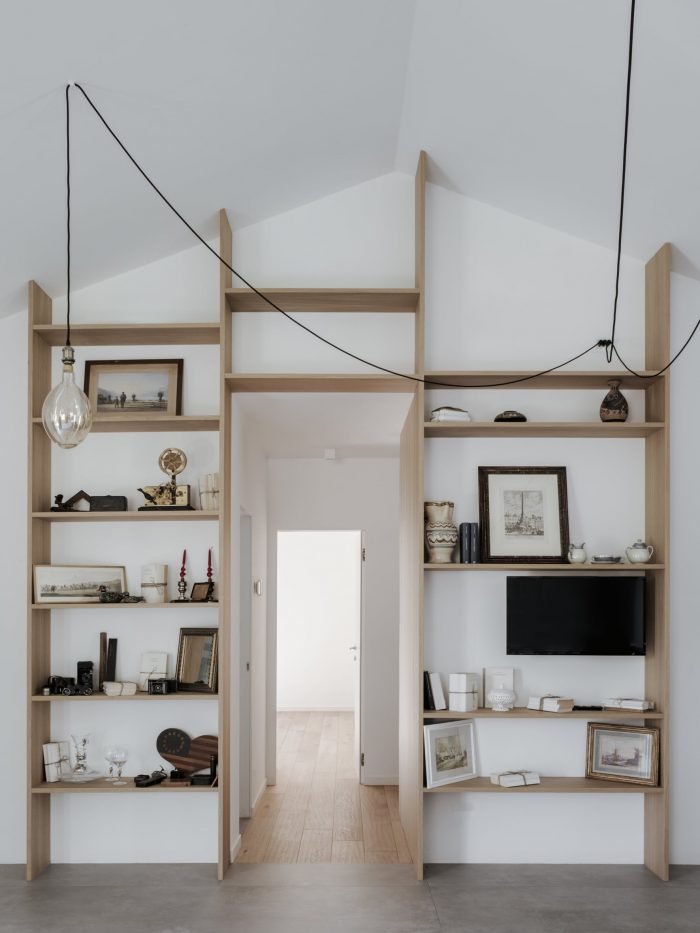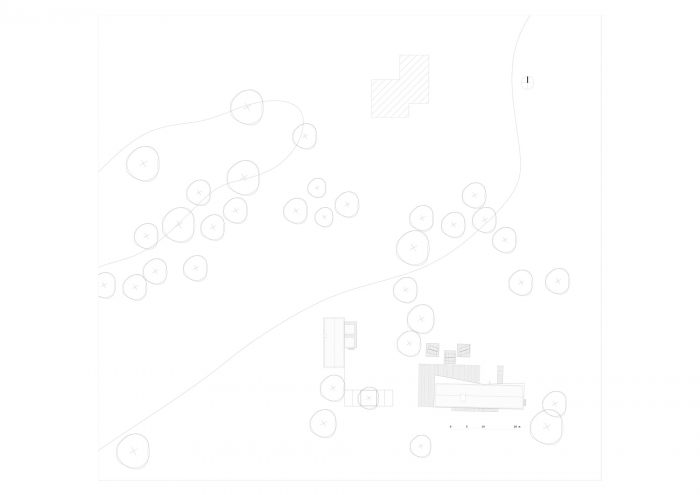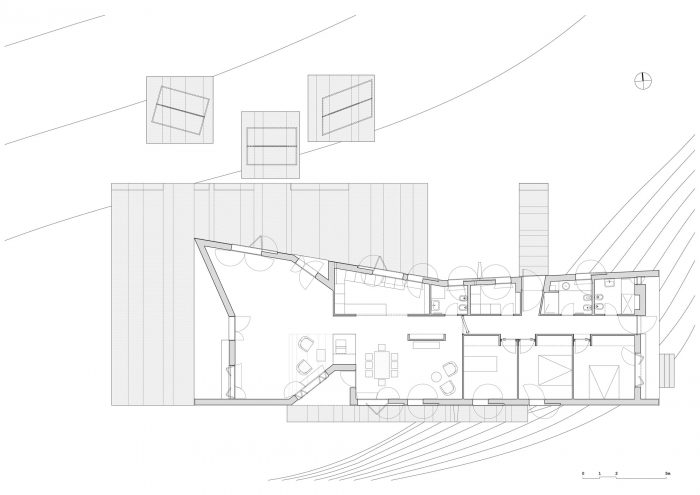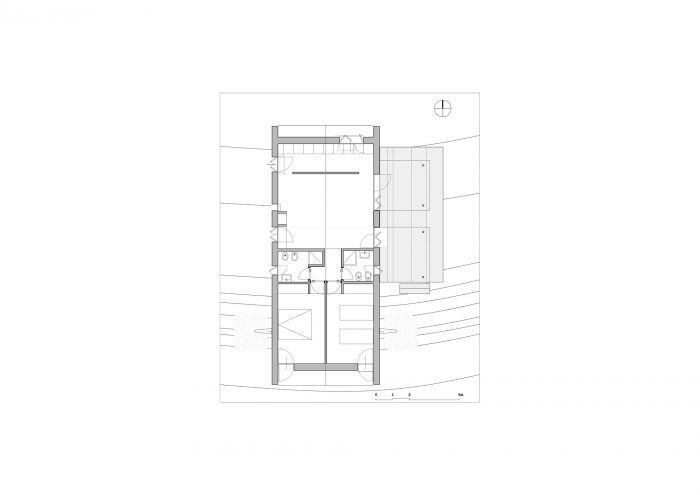建筑公司gamp!已经完成了在Montefiascone的两个别墅的规划。两栋房子,一栋供客户自己使用,另一栋供他们的朋友在周末和假期使用。三座房子–两座在地上,第三座在地下–是在两座专门存放农业机械的凝灰岩建筑的基础上设计的,其沉淀物的灵感来自于此,矗立在托斯卡纳的土地景观中,这是一个温和的乡村,点缀着高大的橡树。建筑师解释说,”我们的想法是想象简单的、几乎是典型的房屋,在不改变其平衡的情况下,与几乎完整的托斯卡纳景观和谐地融合在一起,回溯一个既定的形象,不放弃现代项目的特点”。
The architectural firm gamp! has finished planning two Villas in Montefiascone. Two houses, one for the clients themselves, and one for their friends to use during weekends and holidays. Three houses – two above ground and a third underground – which were designed on the renovation of two tuff buildings dedicated to the deposit of agricultural machinery and from which the sediment was inspired, stand in the Tuscia land-scape, a gentle countryside, dotted with tall oaks. The architects explain that “the idea was to imagine simple, almost archetypical, houses, which would blend harmoniously with the almost intact landscape of the Tuscia without altering its balance, retracing an established image, without giving up on the characteristics of a modern project.”
虽然在空间上是流动的,但建筑在功能组织上是严谨的,由于窗户的准确定位,以及空间对户外生活的预设,能够将内部空间与外部空间打开。前两座房子是斜屋顶,第三座是花园屋顶;在所有这三座房子中,烟囱的存在通过其尺寸而变得明显。”这些显然是传统的房子,尽管我们通过轻微的变形和它们在地面上的方式来玩弄它们的几何形状;特别是在浅蓝色的房子里,客厅里可见的平面变形,使空间不断变化,缺乏对称性。
Though spatially fluid, the architecture is rigorous in its functional organization and is able to open the interior space to the exterior space thanks to the accurate positioning of the windows, as well as the predisposition of spaces toward outdoor life. The first two houses present a pitched roof, the third has a garden roof; in all three the existence of a chimney is made evident by its dimensions. “These are apparently traditional houses, though we have played with their geometries through slight deformations and through the way they rest upon the ground; particularly in the light blue house the planimetric deformation, which is visible in the living room, makes the space ever-changing and lacking symmetry”.
为了使房屋和谐地融入景观,建筑师选择了传统材料,赤土、抹灰、洞石和石头用于外部;石器、陶瓷和木材用于内部,以保证耐用性和易于维护,”特别是使建筑具有吸收时间流逝的能力,我们认为这是属于好建筑的特征”。
Wanting the houses to fit harmoniously into the landscape brought the architects to choose traditional materials, terracotta, trowelled plaster, travertine, and stone for the exterior; stoneware, ceramic, and wood for the interior, guaranteeing durability and easy maintenance, “and especially giving the architecture the capacity to absorb the passing of time, a characteristic we like to think belongs to good architecture”.
传统材料的使用与它们不那么平常的定位相对应:回收的赤土砖完全覆盖了最小的房子,从墙壁到天花板,在浅蓝色的房子里,墙裙爬上了墙壁;在里面,石器和陶瓷爬上了墙壁和壁炉,绘制出半透明的隔膜和体积。周围的景观点缀着简单的金属凉亭,它们定义了一种假想的建筑,”是对内部生活空间商品的反面改变”。
The use of traditional material corresponds to a not so usual positioning of them: the recycled terracotta tiles completely cover the smallest house, from the walls to the ceiling, in the light blue house the wainscoting climbs up the walls; on the inside, stoneware and ceramic come up the walls and fireplaces to draw translucent diaphragms and volumes. The surrounding landscape is dotted with simple metal gazeboes, which define a sort of hypothetical building, “a counter alter to the commodity of the internal living space”.
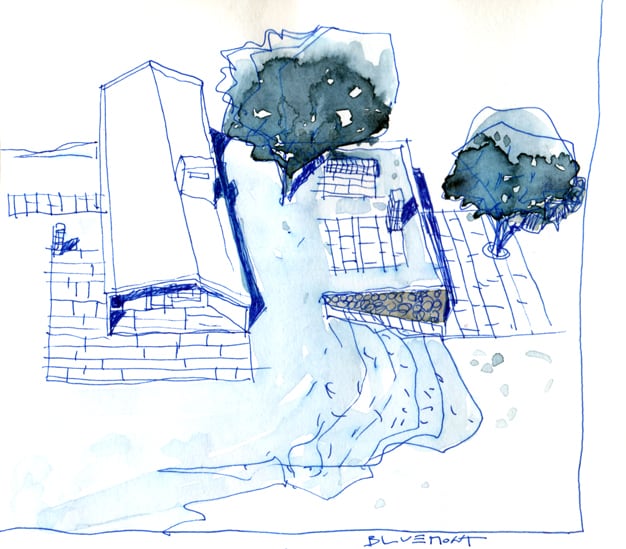

Architects: studio gamp!
Area : 333 ft²
Year : 2021
Photographs :Lorenzo Zandri
Manufacturers : Fiandre, Artemide, Irsap, Mutina, IPF, Pecchioli Firenze, Poroton
Architects : Valentino Anselmi, Valerio Palmieri, Marco Grippo, Matteo Murzi, Roberta Nocco
Engineering Consulting : Fabio Giraldo
Landscape Architect : Luca Dionisi
City : Montefiascone
Country : Italy

